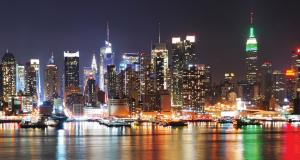Distributed energy has a long history in the state – with co-generation, or combined heat and power, playing the dominant role. How is that portfolio changing today?
Hugo van Nispen is executive vice president of the global Energy Advisory business at DNV GL, a leading energy consultancy and one of the world’s top testing, inspection and certification bodies, and is the primary architect of the energy industry’s leadership forum – Utility of the Future (http://www.dnvgl.com/news-events/events/U-of-F-2015.aspx). Previously he served as president and CEO of KEMA, Inc., guiding that company through its merger with DNV Cleaner Energy – the deal that formed the current DNV GL.
CHP has fueled New York State's economy - and shaped the famed skyline of New York City - since 1881. That was the year New York Steam, a predecessor of Consolidated Edison, completed construction of the first central steam plant, consisting of 48 boilers located at Cortlandt, Dey, Greenwich and Washington Streets. Its 225-foot chimney was the second tallest structure in the city, just below the spire of Trinity Church. The distributed energy system, producing electricity and heat, grew along with the city in the 20th century, making possible the elegant smokestack-free profiles of art deco giants like the Chrysler Building, Rockefeller Center, and the Empire State Building.

Today, CHP (combined heat and power) still comprises the majority share - 57 percent - of the state's distributed energy resource (DER) portfolio. It's an effective distributed resource that has endured, but what role will it play as the state drives toward a smart energy future in an era of aging infrastructure, superstorms and regulatory uncertainty?

